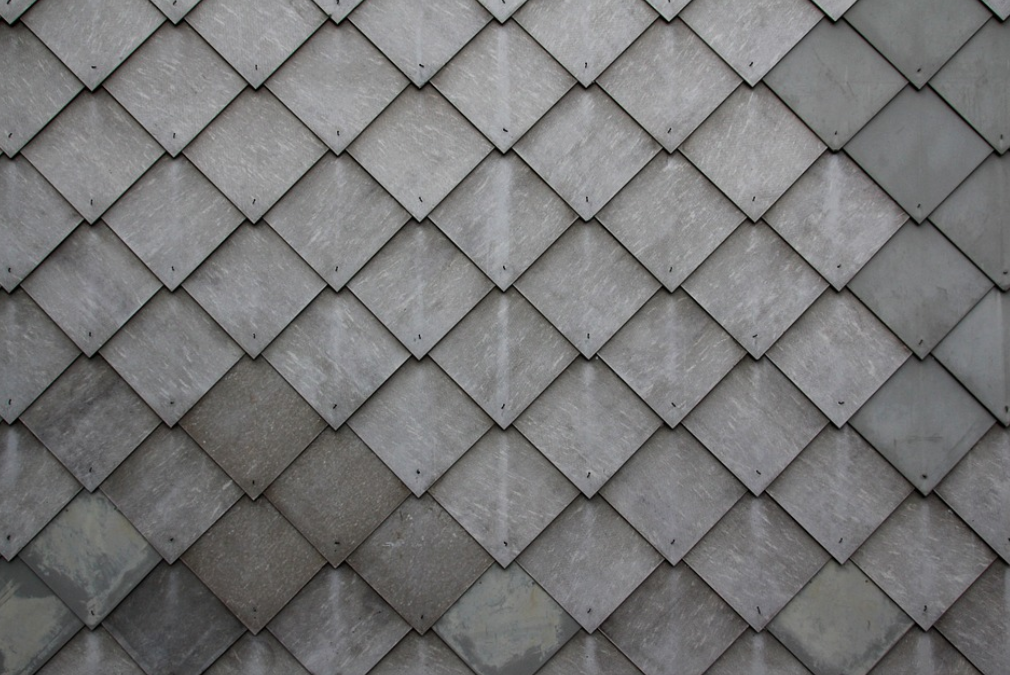Home Maintenance Checklist: Keeping Your Home in Top Shape
Posted by marycimeni in Roofing on Oct 10th, 2023 | Comments Off on Home Maintenance Checklist: Keeping Your Home in Top Shape
Home maintenance is an essential aspect of homeownership that helps protect your investment, ensure your safety, and keep your living environment healthy and comfortable. A well-kept home provides the utmost satisfaction, comfort, and joy. Maintaining your home in top shape requires periodic inspection and timely repairs, which is where a home maintenance checklist becomes invaluable.
Your home maintenance checklist will cover everything from your roof to your basement. The checklist will be divided into tasks that need to be completed monthly, seasonally, or annually. Here’s a detailed guide to help you maintain your home in top condition.
Monthly Tasks
1. HVAC Filters: Regularly inspect the heating, ventilation, and air conditioning (HVAC) system filters. Depending on the air quality in your area and your household’s habits, you may need to change these filters monthly or bimonthly to ensure optimal performance and indoor air quality.
2. Kitchen Appliances: Clean the oven and stove to prevent grease build-up that could lead to fires. Descale the dishwasher and clean the refrigerator coils to improve energy efficiency.
3. Check Safety Devices: Test smoke alarms, carbon monoxide detectors, and fire extinguishers. Ensure they are working correctly and replace batteries or the device as needed.
Seasonal Tasks
Spring:
1. Exterior Inspection: Check the roof for any damage caused by winter storms. Look for cracked or missing shingles and repair promptly to prevent leaks. Inspect your home’s exterior paint for chipping or peeling and schedule a paint touch-up if needed.
2. Landscaping: Clear out dead plants and shrubbery, re-mulch where necessary, and prepare for spring planting.
Fall:
1. Gutters: Clear leaves and debris from gutters and downspouts to prevent water damage. Check for any leaks or damages and make necessary repairs.
2. Heating System: Have a professional service your furnace or heating system to ensure it’s ready for winter.
Annual Tasks
1. Septic System: If you have a septic system, it should be inspected and pumped annually to prevent back-ups and increase the system’s life.
2. Water Heater: Inspect your water heater for leaks or corrosion and drain it to remove sediment. This will help prolong the heater’s life and lower energy costs.
3. Windows and Doors: Check for drafts around windows and doors. Caulk or apply weatherstripping where needed to improve energy efficiency.
4. Pest Control: Even if you haven’t noticed any pests, an annual termite inspection is a good idea to prevent future infestations.
Remember, preventive maintenance is more cost-effective than repairs, and it can add years to the lifespan of your home’s components. This home maintenance checklist can help you prevent small problems from becoming big ones, saving you time, stress, and money in the long run.
By creating and adhering to a robust home maintenance schedule, you can keep your home in peak condition and enjoy the comfort and security it offers. Regularly investing time and effort in maintaining your home is truly worth it, as it will keep your home in top shape, preserving its value for years to come.
Tips When Touring Madagascar for First Timers
Posted by marycimeni in Roofing on Apr 14th, 2023 | Comments Off on Tips When Touring Madagascar for First Timers
Madagascar, the fourth largest island in the world, is a biodiversity hotspot and a must-visit destination for nature enthusiasts. The country is home to unique wildlife, stunning landscapes, and rich culture, making it an ideal destination for first-time visitors. If you’re planning a trip to Madagascar, here are some tips to help you make the most of your experience:
Plan your itinerary carefully
Madagascar is a vast country, and there is so much to see and do. Before you arrive, make a list of the places you want to visit and the things you want to do. You can choose to visit the capital, Antananarivo, and then venture out to the national parks, or you can start your journey directly from the parks. Be sure to research the travel times and distances between each destination to avoid spending too much time on the road.
Be prepared for the climate
Madagascar has a tropical climate, which means it is hot and humid all year round. It’s important to pack light, breathable clothing made of natural fibers, such as cotton or linen. You should also bring sunscreen, a hat, and sunglasses to protect yourself from the sun. If you’re visiting during the rainy season, which runs from November to March, be prepared for sudden downpours and bring a raincoat or umbrella.
Respect the local customs
Madagascar has a rich cultural heritage, and it’s important to respect the local customs and traditions. For example, it’s considered disrespectful to wear revealing clothing or to show public displays of affection. In some areas, it’s also customary to remove your shoes before entering someone’s home. By respecting the local customs, you’ll not only show your appreciation for the culture but also make a positive impression on the locals.
Hire a local guide
One of the best ways to experience Madagascar is by hiring a local guide. A guide can provide you with valuable insights into the local culture and help you navigate through the national parks. They can also help you spot wildlife that you might not have otherwise seen. Be sure to choose a guide who is licensed and experienced.
Sample the local cuisine
Madagascar has a unique cuisine that is influenced by French, African, and Asian flavors. Some of the local dishes to try include zebu steak, a meat dish made from the hump of the zebu cattle, and romazava, a beef or pork stew made with local greens. You should also try the fresh seafood, such as the grilled octopus, which is a popular dish in the coastal towns.
Stay in eco-friendly accommodations
Madagascar is home to some of the world’s most unique and fragile ecosystems, and it’s important to minimize your impact on the environment. There are several eco-friendly accommodations, such as ecolodges and eco-campsites, that use sustainable practices to reduce their carbon footprint. By staying in these accommodations, you’ll not only help protect the environment but also support the local communities.
Learn about the local wildlife
Madagascar is famous for its unique wildlife, including the lemurs, which are only found on the island. There are several national parks where you can observe these fascinating creatures in their natural habitat, such as Andasibe-Mantadia National Park and Ranomafana National Park. The island is home to a diverse range of species, including the famous lemurs, as well as chameleons, geckos, and several species of birds. To make the most of your wildlife experience, it’s a good idea to hire a local guide who can help you spot the animals and provide you with insights into their behavior and habitat. Additionally, it’s important to respect the wildlife and not disturb them by getting too close or making loud noises. By learning about the local wildlife, you’ll gain a deeper appreciation for Madagascar’s unique biodiversity and the importance of protecting it for future generations.
Why You Should Consider Using Shingles
Posted by marycimeni in Roofing on Nov 30th, 2021 | Comments Off on Why You Should Consider Using Shingles
The primary thing you’ll need to think about is the area and use of the development you’re building. Various environments can effectively affect the material you decide to utilize. For instance, a seaside building might require a more solid material to withstand solid breezes, or a metal rooftop produced using copper will go an alternate shading whether it’s presented to pungent air or in an extremely dry environment.
You’ll likewise need to think about the use of the structure; regardless of whether you’re keeping animals inside, or whether you need to guarantee you’re staying away from buildup. This might require an extra defensive covering.
It’s additionally worth contemplating whether you want to give light access through the rooftop, as that could influence which style or materials you’re ready to pick.
What material should I use on a rooftop
There are an entire scope of various choices for roofing materials, and each accompanies its own rundown of upsides and downsides.
Covered rooftops are exceptionally unprecedented in new forms, as they require a great deal of upkeep, they are costly, and can be defenseless against fire harm.
Green rooftops are filling in notoriety as they are considered to be an eco-accommodating choice, yet you additionally need to be careful with the difficulties of waterproofing and guaranteeing you have a thorough establishing system. They likewise should be slowly developed in layers, so it tends to be a tedious interaction.
The most widely recognized roofing materials are tiles (record, mud, or cement being the typical choices), or metal (steel and aluminum are ordinary, however copper and zinc are likewise famous). A large number, sheds, or carports might have a level rooftop that utilizes felt or fiberglass.
Dirt and record tiles have been utilized for quite a long time, and they are likewise extraordinary eco-accommodating choices as they are effectively produced using normal assets, just as being strong. Substantial tiles are roughly 20% less expensive than mud however don’t generally withstand enduring very also. Then again, they are regularly found as interlocking tiles, which rush to lay and are likely the least expensive material choice accessible, in the event that you don’t mind forfeiting excellence for comfort!
Metal rooftops are normally laid in sheets and are reasonable for a wide scope of business, horticultural, and homegrown purposes. They’re speedy to introduce, exceptionally solid, and lightweight, so are an incredible choice for fledglings.
Signs That You Need To Repaint Your Exterior
Posted by marycimeni in Roofing on May 23rd, 2021 | Comments Off on Signs That You Need To Repaint Your Exterior
While paint assists with keeping these surfaces shielded from the components, no surface will keep going forever. You may see breaks in your plaster or indications of spoiling in wood. Now, you’ll need to survey the harm and fix the surface. Whenever this is done, it’s critical to give the house a new layer of paint to guarantee the surface is appropriately shielded from the components.
Thank you to our friends in Arizona at BGB Painting for these painting tips.
The Paint is Beginning to Crack
On the off chance that you spot paint that is stripping, broken, or gurgling, it’s imperative to make a move immediately. When paint strips away, it leaves portions of your home presented to the components. This could cause long haul harm. In the event that the wood is presented to rain or snow, it could prompt shape, buildup, and in any event, spoiling. In the event that you notice any of these indications, it’s a certain sign that it’s an ideal opportunity to give the entire outside of the house a new paint work.
The Caulking is Broken
Caulking is generally around your entryways and windows and is utilized to appropriately seal them. In the event that you notice little breaks there, they can once in a while be fixed by basically filling them in with crisp caulking. Whenever left untreated, this can consider dampness to leak in, which could cause bunches of harm. In the event that you notice bigger breaks, you’ll need to supplant the caulking and add a new layer of paint to give it an additional layer of insurance.
You Can See Stains and Molds
Dampness stains and form are in some cases simply surface stains that can be cleaned away or taken out with pressure washing or some honest effort. Be that as it may, now and then these stains can be indications of more profound harm. In the event that you can’t eliminate a difficult stain, it’s a smart thought to have an expert investigate it. Numerous stains simply should be covered up, notwithstanding, you may have to supplant the material if there is more broad harm.
The Colors Are Starting to Blur
Following quite a while of rising up to rain, snow, and exceptional daylight, all things considered, your outside paint will begin to blur. Blurring is considerably more than simply a stylish issue—it’s regularly the main sign that your paint work is done giving the insurance your home necessities. On the off chance that you notice the shading is looking somewhat dull or level, it’s a happy chance to consider a new paint work. Not exclusively will you give your home a facelift, however you’ll likewise be keeping it better shielded from the components.
The Color Does Not Look Attractive to you Anymore
Now and then the need to paint the outside of your house is absolutely a stylish one. On the off chance that the house was painted in even more a pattern shading the last time it was done, it might begin to look somewhat dated. At the point when you’re prepared for something new, ensure you set aside the effort to pick the correct shading for your home’s outside. All things considered, it’s a great deal of work to repaint an entire house on the off chance that you conclude you don’t care for the shading. Consider the style of your home, the shading range of different homes around there, and the general climate. More tips on picking outside paint tones can be found here.
6 Designer Tricks for Picking a Perfect Color Palette
Posted by marycimeni in Roofing on Nov 23rd, 2020 | Comments Off on 6 Designer Tricks for Picking a Perfect Color Palette
Do you have difficulty in choosing the right color for your home? Well, we understand the struggle. Whether you’re building a new home or you’re renovating an old home, choosing the perfect color palette to follow for your interior or exterior is a daunting task. That is why we have compiled some essential designer tricks to help you get started.
Pick an Anchor Fabric
In view of the style and subject, settle on an “anchor” texture that has at least 3 tones. This will be the room’s fundamental motivation. Spot your anchor texture in any event three spots in the room, for example, upholstery, pads, or draperies.
Divider Color
Pick a foundation tone from the anchor texture as a divider tone for your room. You will need to isolate shading use to roughly 60% of the room out of sight (lightest) shading, 30% in the mid tone, and 10% in the most brilliant, emphasized colors.
Ground surface and Furniture
Pick mid-conditioned shading from the texture for ground surface and enormous furniture pieces, which could be a strong or designed plan. Upholstery should likewise be possible in your anchor texture or an organizing texture.
Embellishments and Accents
Utilize the most splendid shadings from the anchor texture for frill and accents like welting, picture mats, and improving pads. Utilize planning textures in different scales (bigger or more modest) as highlight textures on seats, pads, cording, and decorative spreads.
Depend on Timeless Pairings
There’s an explanation certain shading blends have become exemplary pairings. They’ve endured the trial of time and have consistently looked great. High contrast are a powerful team of shadings that never become unfashionable. It’s a stylish, immortal shading palette that can undoubtedly be modified by presenting accent tones and metallic.
Go Monochromatic
If all else fails, pick one tone and go for it. Focus on your number one tone by occupying a space with that tone. A striking shading works best in more modest spaces, similar to washrooms. Try to separate the monochromatic shading with certain neutrals. For instance, in the event that you go with a strong green, utilize white moreover.
